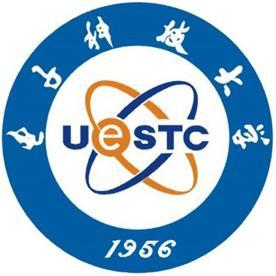 City Attractions
City Attractions
Chengdu has been a governmental and cultural center since at least 400 BC, undergoing numerous name changes during the course of its long history.
Through the city flows the Jinjiang River (River of Brocade).
In downtown area, long and wide avenues flanked by high-rise buildings and local shops and stores are dotted with luxuriantly-grown
green trees, and well-trimmed pretty flowers. Indeed, it is a beautiful city full of vigor and vitality.
Besides the local teahouses, snack bars and bazaars (also known as free markets) are still the popular places for tourists to frequent.
One can either taste the typical Sichuan cuisine, local wine and tea or sort out his shopping of local special products like
Shu embroidery pieces, bamboo-woven porcelain ware and lacquer ware or familiarize himself with local folklores and customs.
|
| . |
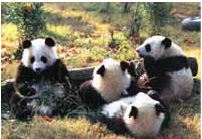 Chengdu Giant Panda Breeding Research Base
Chengdu Giant Panda Breeding Research Base
The Research Base may be the best place to see them. There are bamboo-shaded paths, animal pens, research laboratories (no visitors allowed), and a museum housing exhibits on pandas, butterflies, and China's vertebrate animals, and at least a half-day visit to the base is appropriate. Eighty-five percent of the world's remaining wild giant pandas live in Sichuan, and the Research Base and Chengdu Zoo have 21 giant pandas, more than 20 lesser pandas, and many black-necked cranes and white storks. There are 14 kinds of bamboo and 300 other plant species at the Base.
|
| . |
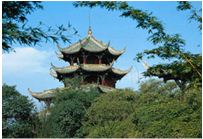 Wangjiang Lou Park
Wangjiang Lou Park
Located on the south bank of Jinjiang River, it is renowned because a famous poet in Tang Dynasty, Xue Tao (768-831), once lived here. She is well known for her poetic work, which was acknowledged and admired by her contemporaries. Because Xue Tao loved bamboo, which she regarded as a symbol of modesty and self-control, over 100 types of bamboo were planted on the grounds in her honor. Wangjiang Lou Tower, offering a view of the river, is 30 meters high and very elegantly constructed.
|
| . |
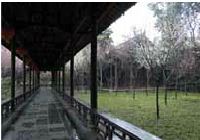 Du Fu's Thatched Cottage
Du Fu's Thatched Cottage
It was formerly the residence of Du Fu, a prestigious Chinese poet of the Tang Dynasty. Here, Du Fu lived for four years and wrote over 240 realistic poems. In order to respect and admire the saint in the world of verse, the later generations from the Northern Song Dynasty set up a memorial temple in the cottage site for visit. There are the Lobby, the History in Verse Hall, the Shrine of Gong Bu, Stele Pavilion of Shao Ling's Thatched Cottage and so on in the extant main buildings.
|
| . |
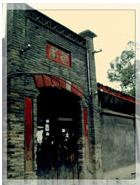 Wide & Narrow Lanes
Wide & Narrow Lanes
Wide & Narrow Lanes, lying in the ancient Shao Cheng area of Chengdu, are composed of mostly buildings in the Ming and Qing Dynasties along the street and are one of the three major protect areas of the famous historical and cultural city block of Chengdu together with the Daci Temple and Wenshu Temple.
|
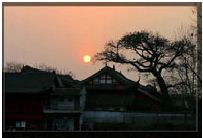 Huanglongxi
Huanglongxi
Huanglongxi: an old town with deep tradition on construction style of West Sichuan. Around 50 Kilometers from Chengdu, a popular scenic spot in recent years. The Qing Dynasty style buildings here are well preserved and attract so many film makers to shoot exterior views. On the ninth day of the sixth and ninth lunar month, temple fairs recreate the lively scenes of olden days.
|
| . |
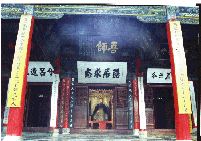 Wuhou Temple (the Temple of Martial Marquis)
Wuhou Temple (the Temple of Martial Marquis)
It was built in commemoration of the famous Martial Marquis Zhuge Liang , the Prime Minister of the Shu-Han Kingdom. Wuhou might be translated as "minister of war". That was the title given to Zhuge Liang, a famous military strategist of the Three Kingdoms period (220-280AD) immortalized in one of the classics of Chinese literature, The Tale of the Three Kingdoms. The temple displays the suppleness of the Chinese garden. There are numerous historical relics like horizontal cribbed boards, couplets, Inscribed tablets, penmanship, furnaces, Chinese tripods, etc.
|
| . |
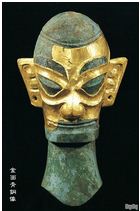 Sanxing Dui Ancient City
Sanxing Dui Ancient City
The site of Sanxing Dui Ancient City, located at Guanghan 40km from Chengdu, is recognized as the most important ancient remains of the Sichuan region. Sanxing Dui Ancient City is the eldest and largest Shu ancient city found in China. In 1986, two enormous altars from the Shang dynasty, the top copper statue of the world-bronze human figures and a gold masks were found. Sanxing Dui represents another source of Chinese civilization -- the Yangtze River civilization. The unique and wonderful Sanxingdui culture civilization tells us that the source of Chinese civilization is pluralistic. There was not only the Yellow River civilization, but also the Yangtze River civilization in China.
|
| . |
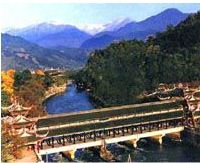 Dujiangyan (Barrier Lake)
Dujiangyan (Barrier Lake)
It is one of the world’s first irrigation systems, located on the upper reaches of the Minjiang River, 35 kilometers from Chengdu. It was built between 306-251 BC by the local people under the guidance of Bing Li and his son. Dujiangyan is the oldest large-scale water conservancy project in China, a major historical site under state protection, as well as a national scenic area, characterized by its well-known irrigation system. Known as a “Field Museum of Irrigation Works”, Dujianyan was listed in the United Nations Education Scientific and Cultural Organization (UNESCO) List of World Heritage in 2000.
|
| . |
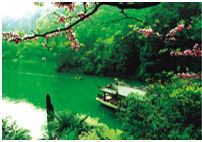 Qingcheng Mountain
Qingcheng Mountain
Qingcheng Mountain (Qingchengshan), 65km west of Chengdu, is one of the ancient cradles of Daoism. The mountain has numerous Daoist temples and sites along the paths to its peak. The area is green all year round and is known for its secluded tranquility. Jianfu Temple (Jianfu Gong) sits at the base of the mountain and is a large, well-preserved Daoist temple from the Tang Dynasty. In 2000, Qingcheng Mountain was listed in the UNESCO List of World Heritage.
|
| . |
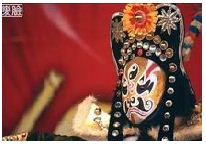 Sichuan Opera
Sichuan Opera
It is one of the most famous operas in China, and has a very long history. Bian Nian is the masterpiece and essence of the present Sichuan opera, which has been widely publicized and well known in China, and grasped only by few people. Face off or face change in English, Bian Nian is the one of the artistry of the stagecraft, which reflects the minds and sentiments of the stage performers in a romantic way.
|
| . |
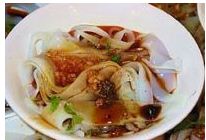 Sichuan Cuisine
Sichuan Cuisine
As one of the Chinese four great dish systems, Chuan dish is made up of Chengdu dish, Chongqing dish, Zigong dish and the ancient traditional vegetarian dish. It is famous all over the world for its hot flavor, and has the reputation of "Food in China and Flavor in Sichuan". The main characteristics of Chuan dish are: careful selection, meticulous cutting and arrangement, exquisite cooking, various seasoning. The usual flavors are: garlic sauce, five spices, piquant sauce, red pepper sauce, tingling and hot, sour and hot.
|
 City Attractions
Chengdu has been a governmental and cultural center since at least 400 BC, undergoing numerous name changes during the course of its long history.
Through the city flows the Jinjiang River (River of Brocade).
In downtown area, long and wide avenues flanked by high-rise buildings and local shops and stores are dotted with luxuriantly-grown
green trees, and well-trimmed pretty flowers. Indeed, it is a beautiful city full of vigor and vitality.
Besides the local teahouses, snack bars and bazaars (also known as free markets) are still the popular places for tourists to frequent.
One can either taste the typical Sichuan cuisine, local wine and tea or sort out his shopping of local special products like
Shu embroidery pieces, bamboo-woven porcelain ware and lacquer ware or familiarize himself with local folklores and customs.
City Attractions
Chengdu has been a governmental and cultural center since at least 400 BC, undergoing numerous name changes during the course of its long history.
Through the city flows the Jinjiang River (River of Brocade).
In downtown area, long and wide avenues flanked by high-rise buildings and local shops and stores are dotted with luxuriantly-grown
green trees, and well-trimmed pretty flowers. Indeed, it is a beautiful city full of vigor and vitality.
Besides the local teahouses, snack bars and bazaars (also known as free markets) are still the popular places for tourists to frequent.
One can either taste the typical Sichuan cuisine, local wine and tea or sort out his shopping of local special products like
Shu embroidery pieces, bamboo-woven porcelain ware and lacquer ware or familiarize himself with local folklores and customs.
 Chengdu Giant Panda Breeding Research Base
The Research Base may be the best place to see them. There are bamboo-shaded paths, animal pens, research laboratories (no visitors allowed), and a museum housing exhibits on pandas, butterflies, and China's vertebrate animals, and at least a half-day visit to the base is appropriate. Eighty-five percent of the world's remaining wild giant pandas live in Sichuan, and the Research Base and Chengdu Zoo have 21 giant pandas, more than 20 lesser pandas, and many black-necked cranes and white storks. There are 14 kinds of bamboo and 300 other plant species at the Base.
Chengdu Giant Panda Breeding Research Base
The Research Base may be the best place to see them. There are bamboo-shaded paths, animal pens, research laboratories (no visitors allowed), and a museum housing exhibits on pandas, butterflies, and China's vertebrate animals, and at least a half-day visit to the base is appropriate. Eighty-five percent of the world's remaining wild giant pandas live in Sichuan, and the Research Base and Chengdu Zoo have 21 giant pandas, more than 20 lesser pandas, and many black-necked cranes and white storks. There are 14 kinds of bamboo and 300 other plant species at the Base.
 Wangjiang Lou Park
Located on the south bank of Jinjiang River, it is renowned because a famous poet in Tang Dynasty, Xue Tao (768-831), once lived here. She is well known for her poetic work, which was acknowledged and admired by her contemporaries. Because Xue Tao loved bamboo, which she regarded as a symbol of modesty and self-control, over 100 types of bamboo were planted on the grounds in her honor. Wangjiang Lou Tower, offering a view of the river, is 30 meters high and very elegantly constructed.
Wangjiang Lou Park
Located on the south bank of Jinjiang River, it is renowned because a famous poet in Tang Dynasty, Xue Tao (768-831), once lived here. She is well known for her poetic work, which was acknowledged and admired by her contemporaries. Because Xue Tao loved bamboo, which she regarded as a symbol of modesty and self-control, over 100 types of bamboo were planted on the grounds in her honor. Wangjiang Lou Tower, offering a view of the river, is 30 meters high and very elegantly constructed.
 Du Fu's Thatched Cottage
It was formerly the residence of Du Fu, a prestigious Chinese poet of the Tang Dynasty. Here, Du Fu lived for four years and wrote over 240 realistic poems. In order to respect and admire the saint in the world of verse, the later generations from the Northern Song Dynasty set up a memorial temple in the cottage site for visit. There are the Lobby, the History in Verse Hall, the Shrine of Gong Bu, Stele Pavilion of Shao Ling's Thatched Cottage and so on in the extant main buildings.
Du Fu's Thatched Cottage
It was formerly the residence of Du Fu, a prestigious Chinese poet of the Tang Dynasty. Here, Du Fu lived for four years and wrote over 240 realistic poems. In order to respect and admire the saint in the world of verse, the later generations from the Northern Song Dynasty set up a memorial temple in the cottage site for visit. There are the Lobby, the History in Verse Hall, the Shrine of Gong Bu, Stele Pavilion of Shao Ling's Thatched Cottage and so on in the extant main buildings.
 Wide & Narrow Lanes
Wide & Narrow Lanes, lying in the ancient Shao Cheng area of Chengdu, are composed of mostly buildings in the Ming and Qing Dynasties along the street and are one of the three major protect areas of the famous historical and cultural city block of Chengdu together with the Daci Temple and Wenshu Temple.
Wide & Narrow Lanes
Wide & Narrow Lanes, lying in the ancient Shao Cheng area of Chengdu, are composed of mostly buildings in the Ming and Qing Dynasties along the street and are one of the three major protect areas of the famous historical and cultural city block of Chengdu together with the Daci Temple and Wenshu Temple.
 Huanglongxi
Huanglongxi: an old town with deep tradition on construction style of West Sichuan. Around 50 Kilometers from Chengdu, a popular scenic spot in recent years. The Qing Dynasty style buildings here are well preserved and attract so many film makers to shoot exterior views. On the ninth day of the sixth and ninth lunar month, temple fairs recreate the lively scenes of olden days.
Huanglongxi
Huanglongxi: an old town with deep tradition on construction style of West Sichuan. Around 50 Kilometers from Chengdu, a popular scenic spot in recent years. The Qing Dynasty style buildings here are well preserved and attract so many film makers to shoot exterior views. On the ninth day of the sixth and ninth lunar month, temple fairs recreate the lively scenes of olden days.
 Wuhou Temple (the Temple of Martial Marquis)
It was built in commemoration of the famous Martial Marquis Zhuge Liang , the Prime Minister of the Shu-Han Kingdom. Wuhou might be translated as "minister of war". That was the title given to Zhuge Liang, a famous military strategist of the Three Kingdoms period (220-280AD) immortalized in one of the classics of Chinese literature, The Tale of the Three Kingdoms. The temple displays the suppleness of the Chinese garden. There are numerous historical relics like horizontal cribbed boards, couplets, Inscribed tablets, penmanship, furnaces, Chinese tripods, etc.
Wuhou Temple (the Temple of Martial Marquis)
It was built in commemoration of the famous Martial Marquis Zhuge Liang , the Prime Minister of the Shu-Han Kingdom. Wuhou might be translated as "minister of war". That was the title given to Zhuge Liang, a famous military strategist of the Three Kingdoms period (220-280AD) immortalized in one of the classics of Chinese literature, The Tale of the Three Kingdoms. The temple displays the suppleness of the Chinese garden. There are numerous historical relics like horizontal cribbed boards, couplets, Inscribed tablets, penmanship, furnaces, Chinese tripods, etc.
 Sanxing Dui Ancient City
The site of Sanxing Dui Ancient City, located at Guanghan 40km from Chengdu, is recognized as the most important ancient remains of the Sichuan region. Sanxing Dui Ancient City is the eldest and largest Shu ancient city found in China. In 1986, two enormous altars from the Shang dynasty, the top copper statue of the world-bronze human figures and a gold masks were found. Sanxing Dui represents another source of Chinese civilization -- the Yangtze River civilization. The unique and wonderful Sanxingdui culture civilization tells us that the source of Chinese civilization is pluralistic. There was not only the Yellow River civilization, but also the Yangtze River civilization in China.
Sanxing Dui Ancient City
The site of Sanxing Dui Ancient City, located at Guanghan 40km from Chengdu, is recognized as the most important ancient remains of the Sichuan region. Sanxing Dui Ancient City is the eldest and largest Shu ancient city found in China. In 1986, two enormous altars from the Shang dynasty, the top copper statue of the world-bronze human figures and a gold masks were found. Sanxing Dui represents another source of Chinese civilization -- the Yangtze River civilization. The unique and wonderful Sanxingdui culture civilization tells us that the source of Chinese civilization is pluralistic. There was not only the Yellow River civilization, but also the Yangtze River civilization in China.
 Dujiangyan (Barrier Lake)
It is one of the world’s first irrigation systems, located on the upper reaches of the Minjiang River, 35 kilometers from Chengdu. It was built between 306-251 BC by the local people under the guidance of Bing Li and his son. Dujiangyan is the oldest large-scale water conservancy project in China, a major historical site under state protection, as well as a national scenic area, characterized by its well-known irrigation system. Known as a “Field Museum of Irrigation Works”, Dujianyan was listed in the United Nations Education Scientific and Cultural Organization (UNESCO) List of World Heritage in 2000.
Dujiangyan (Barrier Lake)
It is one of the world’s first irrigation systems, located on the upper reaches of the Minjiang River, 35 kilometers from Chengdu. It was built between 306-251 BC by the local people under the guidance of Bing Li and his son. Dujiangyan is the oldest large-scale water conservancy project in China, a major historical site under state protection, as well as a national scenic area, characterized by its well-known irrigation system. Known as a “Field Museum of Irrigation Works”, Dujianyan was listed in the United Nations Education Scientific and Cultural Organization (UNESCO) List of World Heritage in 2000.
 Qingcheng Mountain
Qingcheng Mountain (Qingchengshan), 65km west of Chengdu, is one of the ancient cradles of Daoism. The mountain has numerous Daoist temples and sites along the paths to its peak. The area is green all year round and is known for its secluded tranquility. Jianfu Temple (Jianfu Gong) sits at the base of the mountain and is a large, well-preserved Daoist temple from the Tang Dynasty. In 2000, Qingcheng Mountain was listed in the UNESCO List of World Heritage.
Qingcheng Mountain
Qingcheng Mountain (Qingchengshan), 65km west of Chengdu, is one of the ancient cradles of Daoism. The mountain has numerous Daoist temples and sites along the paths to its peak. The area is green all year round and is known for its secluded tranquility. Jianfu Temple (Jianfu Gong) sits at the base of the mountain and is a large, well-preserved Daoist temple from the Tang Dynasty. In 2000, Qingcheng Mountain was listed in the UNESCO List of World Heritage.
 Sichuan Opera
It is one of the most famous operas in China, and has a very long history. Bian Nian is the masterpiece and essence of the present Sichuan opera, which has been widely publicized and well known in China, and grasped only by few people. Face off or face change in English, Bian Nian is the one of the artistry of the stagecraft, which reflects the minds and sentiments of the stage performers in a romantic way.
Sichuan Opera
It is one of the most famous operas in China, and has a very long history. Bian Nian is the masterpiece and essence of the present Sichuan opera, which has been widely publicized and well known in China, and grasped only by few people. Face off or face change in English, Bian Nian is the one of the artistry of the stagecraft, which reflects the minds and sentiments of the stage performers in a romantic way.
 Sichuan Cuisine
As one of the Chinese four great dish systems, Chuan dish is made up of Chengdu dish, Chongqing dish, Zigong dish and the ancient traditional vegetarian dish. It is famous all over the world for its hot flavor, and has the reputation of "Food in China and Flavor in Sichuan". The main characteristics of Chuan dish are: careful selection, meticulous cutting and arrangement, exquisite cooking, various seasoning. The usual flavors are: garlic sauce, five spices, piquant sauce, red pepper sauce, tingling and hot, sour and hot.
Sichuan Cuisine
As one of the Chinese four great dish systems, Chuan dish is made up of Chengdu dish, Chongqing dish, Zigong dish and the ancient traditional vegetarian dish. It is famous all over the world for its hot flavor, and has the reputation of "Food in China and Flavor in Sichuan". The main characteristics of Chuan dish are: careful selection, meticulous cutting and arrangement, exquisite cooking, various seasoning. The usual flavors are: garlic sauce, five spices, piquant sauce, red pepper sauce, tingling and hot, sour and hot.






